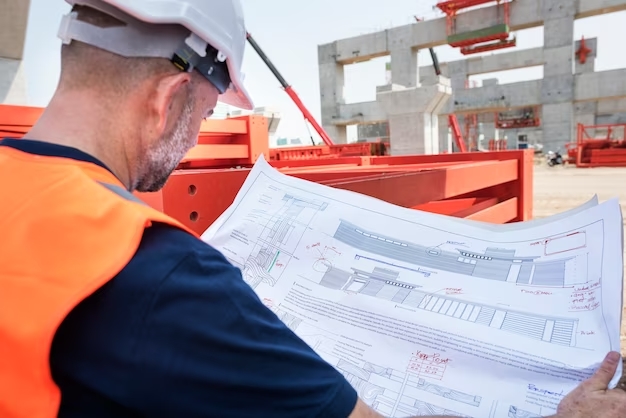Site Preparation: A Comprehensive Guide
Drop a Line if you have a Question!
Are you planning to start a construction project?
Before you can begin, it’s crucial to understand the process of site preparation. In this comprehensive guide, we will walk you through the necessary steps to ensure your site is ready for construction.
You’ll learn how to assess environmental factors, conduct soil testing, clear the site, and plan for utilities and infrastructure.
Get ready to dive into the world of site preparation and set the foundation for a successful project.

Understanding Site Requirements
Understanding the site requirements is crucial before beginning any construction project. You need to familiarize yourself with the specific needs and limitations of the site to ensure a successful outcome.
Start by conducting a thorough site assessment to gather important information about the land, such as soil conditions, topography, and drainage patterns. This will help you determine the appropriate foundation and structural design for the project.
Additionally, you must consider any legal and regulatory requirements, such as permits or zoning restrictions, that may impact the construction process.
Assessing Environmental Factors
Assessing environmental factors can greatly impact the success of your project. When planning your site preparation, it is crucial to consider these factors in order to minimize risks and ensure smooth progress.
Firstly, analyze the climate of the project location. This includes understanding temperature variations, rainfall patterns, and seasonal changes. Knowing this information will help you determine the best time to carry out certain tasks, such as excavation or planting.
Additionally, assess the soil conditions to ensure it is suitable for your project. Conduct soil tests to determine its composition, fertility, and drainage capabilities. This will help you make informed decisions regarding soil amendments or drainage solutions if necessary.
Finally, consider any nearby natural features or protected areas that may impact your project, such as wetlands or endangered species habitats.
Conducting Soil Testing
When conducting soil testing, it’s important to analyze the composition, fertility, and drainage capabilities of the soil.
You need to assess the soil composition to understand its texture, structure, and organic matter content. This information helps determine if the soil is suitable for the intended use.
Additionally, evaluating soil fertility is crucial as it provides insights into the nutrient levels and pH balance. This knowledge allows you to make informed decisions regarding fertilization and soil amendments.
Lastly, examining the soil’s drainage capabilities is vital to ensure proper water infiltration and prevent waterlogging. This assessment helps determine if the soil is well-drained, moderately drained, or poorly drained.
Clearing the Site
To clear the site, you’ll need to remove any vegetation, debris, and obstacles that may hinder your construction or planting plans.
Begin by assessing the area and identifying any trees, shrubs, or grass that need to be removed. Use appropriate tools like a chainsaw, shovel, or pruners to cut down or uproot the vegetation. Dispose of the plants properly, either by composting or recycling them.
Next, remove any debris such as rocks, stones, or fallen branches. Ensure that the site is clear of any obstacles that could interfere with your construction or planting activities. This includes removing old structures, fences, or even large rocks.
Planning for Utilities and Infrastructure
Once you’ve cleared the site, it’s important to plan for utilities and infrastructure to ensure that your project has the necessary resources.
Start by determining the location of existing utility lines, such as water, electricity, and gas. This will help you avoid any potential conflicts or complications during the construction process.
Next, consider the infrastructure needed for your project, such as roads, parking lots, and drainage systems. Assess the site’s topography and make sure your infrastructure plans are aligned with it.
Additionally, don’t forget about telecommunications and internet connectivity, as they are vital for many businesses nowadays.
Finally, consult with professionals, such as engineers and utility companies, to ensure that your plans meet all regulations and requirements.
Conclusion
In conclusion, you now have a comprehensive understanding of site preparation.
You have learned how to assess environmental factors and conduct soil testing.
You have also gained knowledge on clearing the site and planning for utilities and infrastructure.
By following these steps, you will be well-prepared to begin your site preparation project.
Remember to consider all necessary requirements and make careful preparations for a successful outcome.
Good luck with your site preparation endeavors!

Have a question?
Become a
























